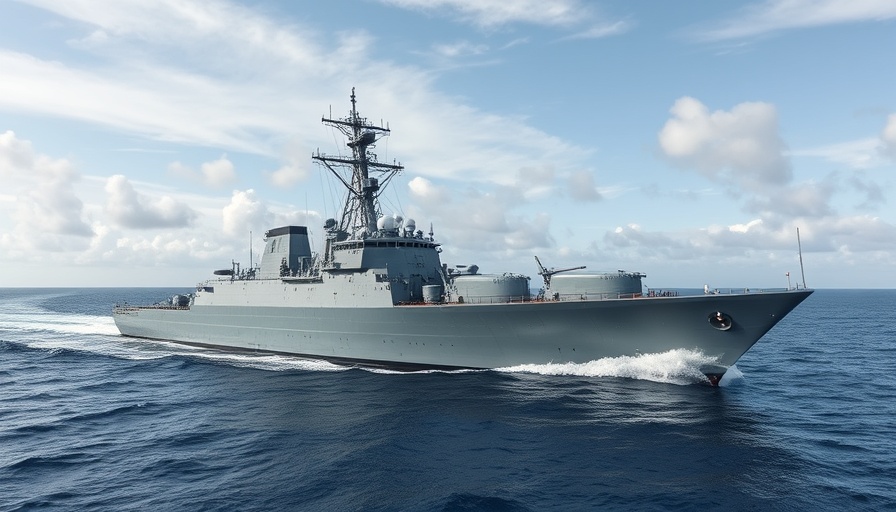
Welcome to the Future of Greek Defense: The FDI Class
The recent sea trials of the first Greek Frégate de Défense et Intervention (FDI) vessel marks a monumental shift in the nation's defense capabilities. This new class of warship represents not just a step toward modernizing Greece's naval fleet, but also signifies a deeper strategic alignment with global partners in the naval defense sector. The FDI class is equipped with advanced technologies designed to ensure maritime security and operational flexibility, playing a vital role in safeguarding Greece's interests in a turbulent geopolitical climate.
A Transformative Military Investment
Investing in the FDI class reflects Greece's commitment to bolstering its security infrastructure. These modern vessels are designed to support a variety of missions, from anti-air to anti-surface operations. With its powerful detection systems and combat capabilities, officials believe the new class will enhance Greece's defense posture, particularly in contested regions of the Eastern Mediterranean. As tensions rise, the timing of these trials couldn't be more crucial, making this development a focal point for both national security and regional stability.
The Technical Marvels Behind FDI
What sets the FDI apart from its predecessors? These ships are equipped with cutting-edge radar and electronic warfare systems, ensuring they can detect threats well before they manifest. Their stealth design minimizes radar cross-section, enhancing survivability on the battlefield. As nations invest in advanced naval technology, Greece's embrace of the FDI indicates a proactive approach to maritime defense, which can serve as an example for its neighbors.
Broader Implications for Global Alliances
The FDI class is not only a testament to Greek innovation but also positions Greece strategically within NATO and among European partners. With heightened collaboration in defense programs, Greece is enhancing its capabilities while reinforcing ties with allies—an essential move in an era characterized by uncertainty. This initiative points toward a potential shift in naval cooperation, with Greece emerging as a key player in maritime security.
Learning from Global Trends in Naval Defense
Across the world, nations are rapidly modernizing their fleets, driven by technological advancements and changing security needs. Germany, for instance, is enhancing its naval capabilities with new submarines, while the U.S. is investing in flexible amphibious assault ships. Greece's participation in this global trend symbolizes a collective shift toward more resilient national defenses and a commitment to maritime peace.
Connecting Communities Through Defense
For those closely following developments in naval technology, such advancements hold not only strategic importance but also communal significance. Local economies often thrive through naval contracts, fostering job growth and innovation. The operation of the FDI is expected to create jobs, benefitting shipyards and local industries while providing a boost to the economy.
What This Means for Naval Enthusiasts
For naval enthusiasts and the general public alike, these trials offer more than just a glimpse into modern warfare; they represent a promise of enhanced safety and security. Watching these ships perform at sea ignites national pride and fosters a deeper understanding of the complexities involved in maritime defense.
The Call for Continued Investment
The commencement of sea trials for the FDI is a vital first step, yet continued investment into naval research and development remains critical. It's essential that Greece not only deploys these vessels but also invests in subsequent training, logistical support, and technological updates. Keeping pace with rapid advancements in naval science ensures that Greece retains its competitive edge.
As these trials progress and the FDI advances into active service, the implications for regional security and defense strategy will be noteworthy. Follow developments closely as Greece embarks on this exciting chapter in its naval history, and stay informed about how these changes can influence both local and global defense landscapes.
 Add Row
Add Row  Add
Add 




Write A Comment